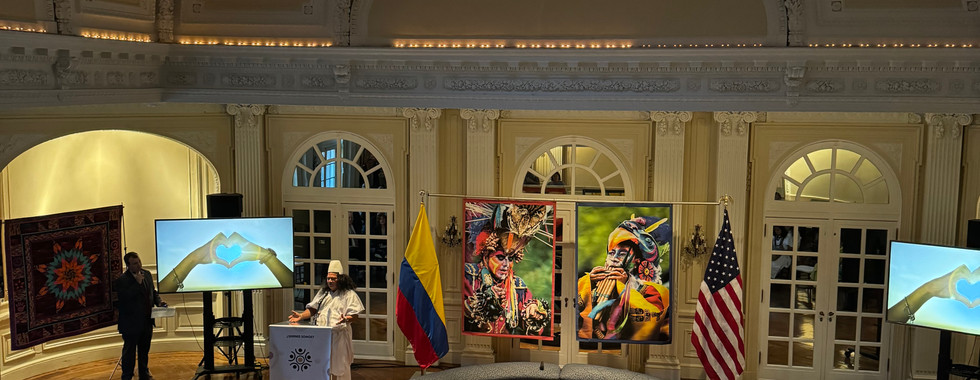Colombia Strengthens Indigenous Ties at Landmark Event in Washington, D.C.
- Embassy of Colombia

- Sep 4, 2024
- 2 min read
August 30, 2024 The Embassy of Colombia in the United States, alongside the Colombian Center for Historical Memory, commemorated the International Day of the World's Indigenous Peoples in Washington, D.C. The event spotlighted Colombia's commitment to Indigenous communities and marked the launch of the "Healing Strategy: Paths of Resistance", developed with leaders from the Nasa, Coreguaje, Wayuu, Muisca, and Sikuani Peoples.

This initiative aims to restore the cultural and physical well-being of communities long impacted by conflict, highlighting Colombia's dedication to preserving Indigenous heritage and memory. Ambassador Daniel García-Peña remarked, "We honor the resilience of Colombia's Indigenous communities and are committed to building lasting bonds that bridge our histories and futures."
The event also fostered connections between Colombian Indigenous communities and Native American nations, with representatives from the Tlingit Haida, Muscogee (Creek), Navajo, Piscataway, Laguna/Umonhon, and Choctaw Tribes, as well as the International Mayan League. These exchanges not only highlighted the shared struggles but also the triumphs of Indigenous peoples across the Americas, reinforcing the Embassy's commitment to advancing social justice and cultural diplomacy.
María Gaitán, Director of the Colombian Center for Historical Memory, added, "This initiative ensures that the voices and histories of our Indigenous peoples are preserved and honored, as we work towards a future rooted in justice and healing." The event stood as a reminder of the power of memory and the importance of safeguarding the cultural patrimony of Indigenous communities, fostering stronger ties between Colombia and the United States through shared respect for heritage and human dignity.
Through these efforts, the Embassy reinforced its commitment to people-to-people diplomacy, advancing social justice and strengthening cultural ties between the two nations. We had the support and collaboration of USAID, the Secretary for Indian Affairs at the Department of the Interior, the Smithsonian National Museum of the American Indians, and the National Center for Historical Memory.































































